
Extractions in dogs and cats are categorized as simple and surgical. Simple extractions are performed where alveolar bone removal is not necessary to facilitate successful extraction. Examples include deciduous teeth, mobile teeth and incisors.

Extractions in dogs and cats are categorized as simple and surgical. Simple extractions are performed where alveolar bone removal is not necessary to facilitate successful extraction. Examples include deciduous teeth, mobile teeth and incisors.

Radiographic evaluation has fast become a common facet of veterinary dentistry and only practices that utilize dental radiography can practice quality dentistry. Interpretation of radiographic changes that occur in the tooth and surrounding bone take many forms.

The largest portion of our dentistry case load in everyday practice involves the treatment of periodontal disease. No other oral malady will present itself more commonly. At the same time proper evaluation of the stage of periodontal disease is determined with probing, visual examination and radiographically.

This author commonly uses lidocaine and bupivicaine combined in the same syringe for regional oral nerve blocks. Lidocaine is not desirable as a sole agent due to its limited effect post administration (1-2 hours).

Prevention and treatment of periodontal disease can only be accomplished through regular professional care under general anesthesia. Multiple steps are involved in this process and the veterinary/technician team plays a vital role in ensuring quality control, efficiency and completeness.

The degree of severity of periodontal disease relates to a single tooth; a patient may have teeth that have different stages of periodontal disease. Here is an outline of the American Veterinary Dental College-approved periodontal disease classifications.
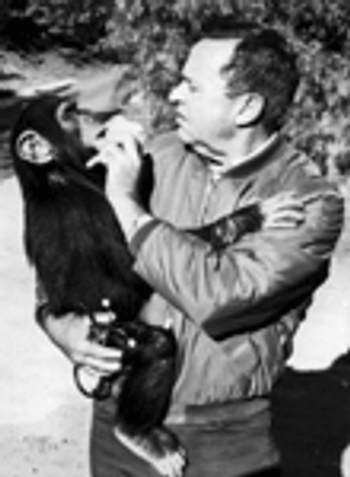
Dr. Robert M. Miller's adventures in wild animal dentistry.

Benign and malignant masses are commonly encountered in the oral cavities of dogs and cats.

Bad breath makes a great video

We wrap a small piece of plastic wrap around the capnograph connection to keep it dry when we perform dental procedures.
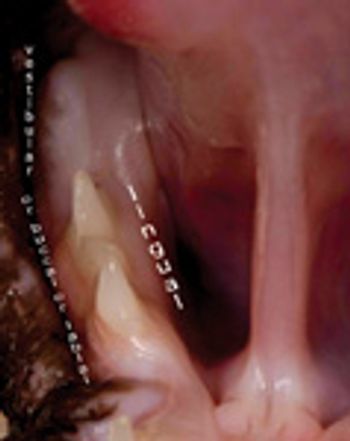
A photo tutorial on surfaces of teeth and directions in the mouth.

Oklahoma City, Okla. -- A bill allowing non-DVMs to float horses? teeth if they meet state certification requirements passed the Oklahoma Senate March 31.

How important is oral hygiene? Just imagine what it would be like if you never brushed your teeth.

"Diamond" is a 12-year-old female spayed Dalmatian that was presented for swelling under the left eye for a two-week duration.

The implementation of veterinary dentistry is increasing in both private and specialty practices. More responsibility is being delegated to the technician, and the expansion of this service relies heavily on a well trained and informed staff. We must remember it is the veterinarian's role to make a diagnosis and prescribe treatment, but it is the technician's role to carry out these orders with competence.

Cats are different! Being obligate carnivores, they do not have "chewing teeth", but instead have carnassial teeth that aid to cut up their food into manageable pieces.

This presentation will summarize the seven disciplines of dentistry, and familiarize the attendee with exodontics, periodontics, endodontics, orthodontics, prosthodontics, restorative dentistry, and oral surgery. Several cases will be reviewed, with a breakdown of why a particular treatment was performed, and the outcome.

The term "prophylaxis" originates from the original Greek, and means to guard or prevent. It applies to any medical term or public health procedure whose purpose is to prevent, rather than treat or cure disease.

Using an ultrasonic scaler during dental procedures can get messy, especially with multiple extractions.

Spontaneous oral hemorrhage without trauma is an uncommon finding.

I am caring for a 4-year-old Westie that has become aggressive. The owner has requested extraction of all four canines or euthanasia. What are your thoughts?
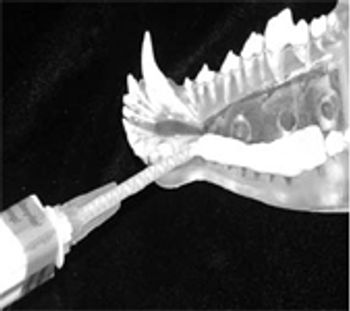
Mandibular fracture is a relatively common injury. Surgical repair of the mandible is complicated by the presence of tooth roots and a mandibular canal with its neurovascular contents.
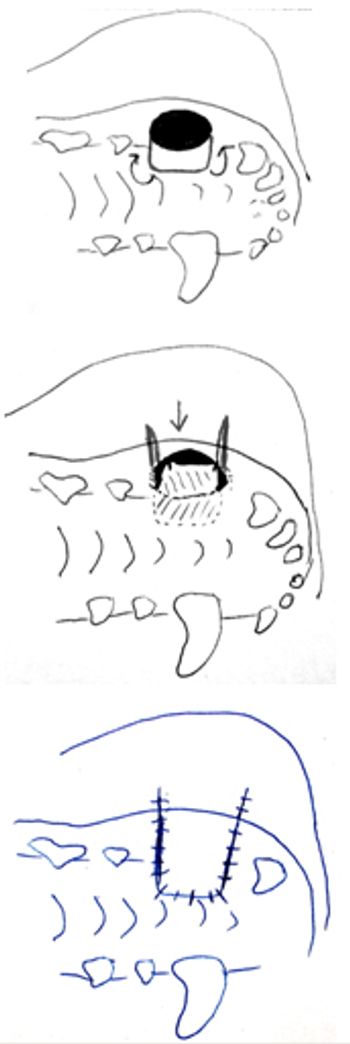
While it is true that many patients with dental problems are geriatric, anesthesia is generally safe and predictable. Routine precautions should be taken with preoperative assessment, not to determine whether or not to administer anesthesia, but to determine how to do it safely.
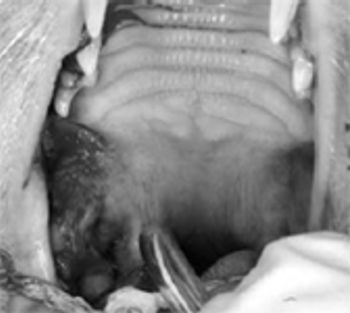
Some of the known causes of external root resorption include inflammation related to infection (either marginal from periodontal disease or apical from endodontic disease), pressure secondary to expanding cysts, tumors, or impacted teeth, excessive orthodontic force, after any trauma to the periodontal ligament, and one component of the normal process of primary tooth exfoliation.
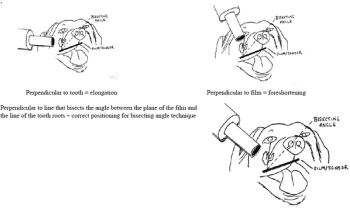
A good clinical oral examination is one of the most important tools we have for diagnosing many dental and oral problems. However, much of the pathology in the oral cavity involves the roots and supportive bone of the teeth instead of their visible crowns.